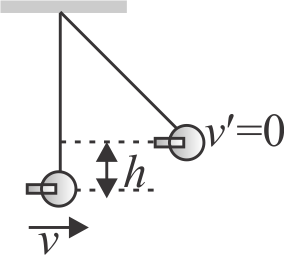355211 A simple pendulum of length \(1 m\) has a wooden bob of mass \(1\,kg\) . It is struck by a bullet of mass \({10^{ - 2}}\;kg\) moving with a speed of \(2 \times {10^2}\;m{s^{ - 1}}\). The bullet gets embedded into the bob. The height to which the bob rises before swinging back is (use \(g = 10\;m/{s^2}\) )
355211 A simple pendulum of length \(1 m\) has a wooden bob of mass \(1\,kg\) . It is struck by a bullet of mass \({10^{ - 2}}\;kg\) moving with a speed of \(2 \times {10^2}\;m{s^{ - 1}}\). The bullet gets embedded into the bob. The height to which the bob rises before swinging back is (use \(g = 10\;m/{s^2}\) )
355211 A simple pendulum of length \(1 m\) has a wooden bob of mass \(1\,kg\) . It is struck by a bullet of mass \({10^{ - 2}}\;kg\) moving with a speed of \(2 \times {10^2}\;m{s^{ - 1}}\). The bullet gets embedded into the bob. The height to which the bob rises before swinging back is (use \(g = 10\;m/{s^2}\) )
355211 A simple pendulum of length \(1 m\) has a wooden bob of mass \(1\,kg\) . It is struck by a bullet of mass \({10^{ - 2}}\;kg\) moving with a speed of \(2 \times {10^2}\;m{s^{ - 1}}\). The bullet gets embedded into the bob. The height to which the bob rises before swinging back is (use \(g = 10\;m/{s^2}\) )
